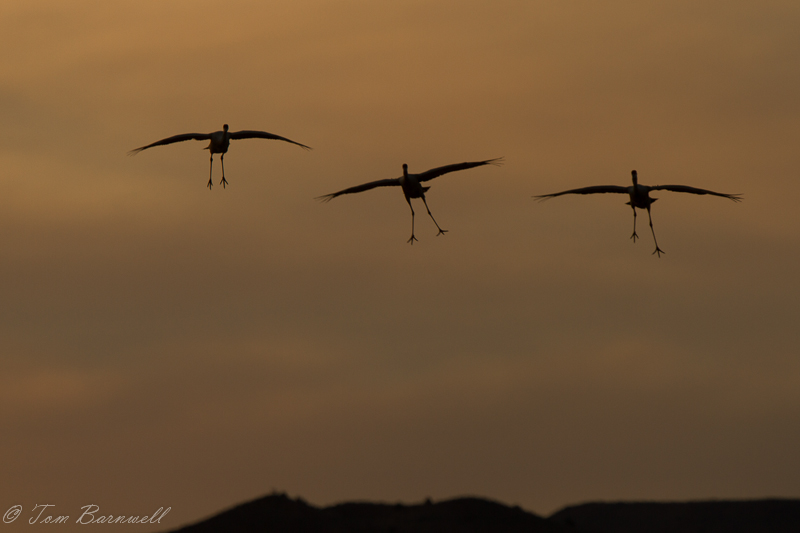Equipment: Canon 7D, 300mm f/2.8+2.0x rented from Borrowlenses.com, Gitzo 2541 Tripod w/Kirk Ballhead + Wimberly Sidekick. Exposure: 1/2500 sec., f/5.6, ISO 100.
First, I'd like to thank Rick for giving me the opportunity to be a guest blogger. So . . . thank you, Rick!
I've made several trips to Bosque del Apache NWR, most recently in 2011 and 2012 with Rick Sammon and Juan Pons. I've found one of Rick's Sammonisms – light illuminates, shadows define – to be particularly effective for capturing the essence of Bosque.
Some of
my favorite images have been defined by shadows - they are silhouettes of
Sandhill Cranes and Snow Geese. In
particular, one image captured cranes lingering in the "Fire Mist"
just as geese departed en masse for the nearby corn fields.
In 2011, we arrived at Bosque del Apache NWR in New Mexico long before dawn after a strong cold front had passed through. There was 6" of snow on the ground and it was -3°F, ideal conditions to create the "Fire Mist." We set up just north of the "Flight Deck" at a break in the vegetation along the edge of the pond.
Just as the sun rose, the Sandhill Cranes in the foreground were lingering in the mist when the Snow Geese decided to depart en masse. I was able to capture three images of the "blast-off" before the geese were gone. After capture, the RAW image color temperature was adjusted to reflect actual conditions and the image was cropped to remove Snow Geese that were partly out of the frame around the edges, but that was all the processing required.
I submitted the image to the refuge and it is being used as the cover for their forthcoming Comprehensive Conservation Plan and Environmental Assessment. They also posted the image on Facebook to illustrate the conditions that create the "Fire Mist." Apparently, they often get questions along the lines of "Where/how do I photograph the steam/fog/hot springs?" They explained: The "steam/fog" seen forming above wetlands is not actually the result of liquid water boiling to gas form (there are no hot springs here); but rather is a process of condensation as water vapor in the air directly above lake surfaces is cooled by the low temperature of the surface water. The effect is usually most pronounced in winter months following cold clear nights. Water just below the surface remains warmer so that vapor still forms above the lake; but the chilled surface causes the vapor to condense into a misty layer of "steam/fog."
Other opportunities exist for shooting silhouettes at Bosque. Another of my favorites, the following images were captured at the Crane Ponds along
NM Hwy 1 just as the sun was setting over the western mountains. It was overcast and the underside of the
clouds was reflected in the surface of the pool. The cranes were just settling in for the
night and I composed an image of this back-lit scene.
Exposure: 1/160 sec at f/5.6.
As a final example, I captured this image as the cranes were flying into the Crane Ponds.
Exposure: 1/200 sec at f/5.6. Equipment as above except using a 400mm F4.0 DO lens borrowed from Canon Professional Services.
The key to a successful shot is to have a recognizable outline to work with. In these cases the silhouette of cranes and geese are readily identifiable. In many cases, a successful silhouette can be made with no exposure compensation if the light is a majority of the frame, but it's best to check the image and compensate as required. I'm constantly checking my histogram, especially when shooting at sunrise and sunset.
I hope you can make it to Bosque del Apache someday - and I hope you catch the "fire mist."
• • • • •
This post sponsored by x-rite. X-Rite is the global leader in color science and technology. The Company develops, manufactures, markets and supports innovative color solutions through measurement systems, software, color standards and services.
This site powered by (designed and hosted on) Squarespace. Use one-click to get started with your own awesome Squarespace site.



